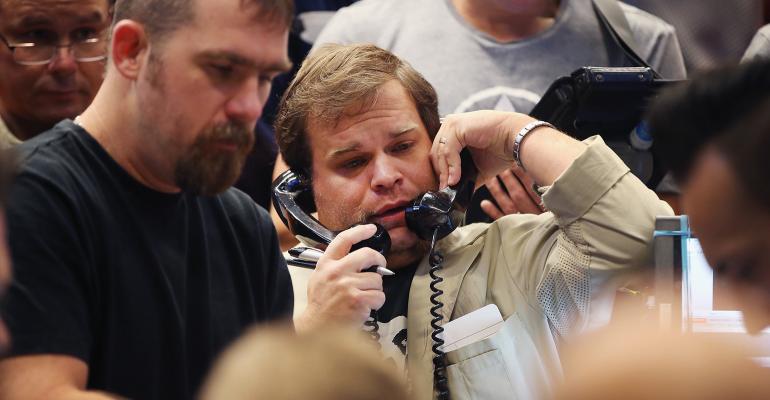By Scott Dorf
(Bloomberg View) --That collective sound you hear emanating from Wall Street is bond traders letting out a sigh of relief. The U.S. Treasury market is little changed this month in terms of returns, a big victory for a market almost everyone thought had nowhere to go but down as Donald Trump and his pro-growth, debt and deficit spending plans settled into the White House.
Close followers of the bond market know that positioning has leaned heavily bearish in recent Januaries, mainly due to a chronic case of economic overoptimism on the part of traders and Federal Reserve policy makers. Those so-called short positions then had to be unwound as growth proved less robust than anticipated.
Luckily for the bears, who have been particularly restless of late, setting up record bets against bonds as measured by futures data, there's reason to believe that the recent past will not be prologue this year.
The economy is showing few signs of weakness, as evidenced by gains in jobs, manufacturing and consumer confidence. The Citi Economic Surprise Index, which measures the data that exceed forecasts relative to those that miss, is hovering at some of its highest levels since the start of 2014, when it presaged annualized growth in gross domestic product of 4 percent in the second quarter of that year and 5 percent in the third.
Fed policy makers show no signs of wavering from their plan to raise interest rates three times this year in 25-basis-point increments, and the market is giving them more credibility than ever before by pricing in almost two full hikes.
Yields on 10-year Treasury notes are back on the rise, topping 2.50 percent again and heading to the 2.60 percent level that at least one prominent bond investor said would cement a bear market. Breakeven rates on five-year inflation-protected bonds, or the inflation rate that traders see over the life of the securities rose this week to the 2 percent level for the first time since mid-2014. That's significant because it suggests traders believe the Fed will finally succeed in meeting its mandate of getting inflation up to the 2 percent level.
Traders are also on tenterhooks regarding the policy path of the Trump administration. The belief that tax cuts, regulatory relief and infrastructure spending will all come to fruition is keeping stocks on the boil and bond prices on the back foot.
The Treasury Department kept the pressure on this week by auctioning two-, five- and seven-year fixed-rate Treasuries and two-year floating-rate notes, raising a total of $103 billion. The mixed results offered a sharp contrast to the surprising demand at the sales in late December, when many experienced traders were off for the holidays.
Although 10-year Treasury yields are not that far above their 2.40 percent average since the election, domestic investors are less aggressive buyers when rates do tick up. That's a worrisome sign, and may be a reflection of the buoyancy of riskier assets such as stocks and the speed of the Trump team's moves on policy initiatives such as reviving the construction of the Keystone XL and Dakota Access pipelines, and withdrawing from the Trans-Pacific Partnership trade agreement.
Next week may not favor the bulls, either. The Fed meets on interest rates, and data on jobs, spending, incomes and manufacturing will be released.
To be sure, it's still early days and there's plenty of time for the economy and the Trump administration to disappoint. But until then, the bond vigilantes will be in control, pressuring yields higher.
This column does not necessarily reflect the opinion of the editorial board or Bloomberg LP and its owners.
Scott Dorf is a managing director at Amherst Pierpont Securities. He has been selling and trading U.S. Treasuries for more than 30 years.
To contact the author of this story: Scott Dorf at [email protected] To contact the editor responsible for this story: Robert Burgess at [email protected]
For more columns from Bloomberg View, visit Bloomberg.com/view





